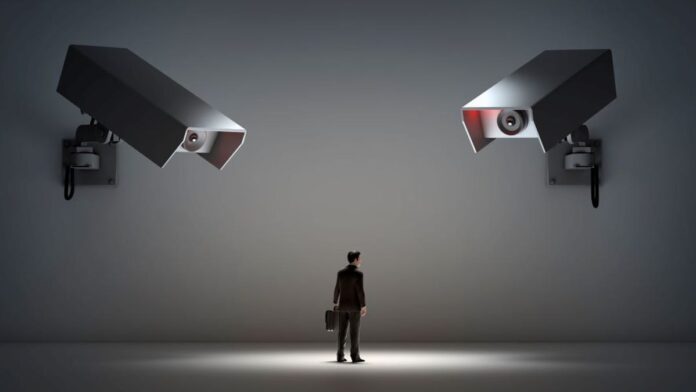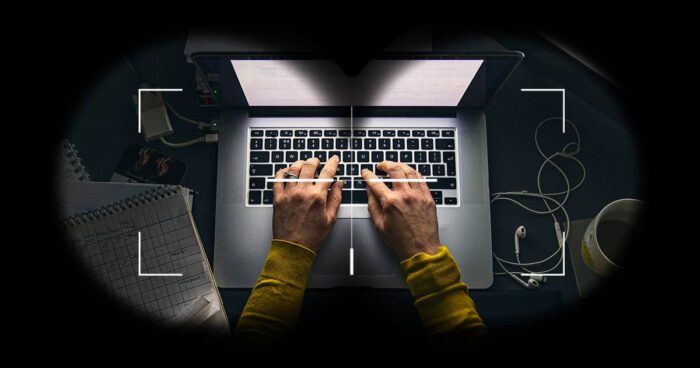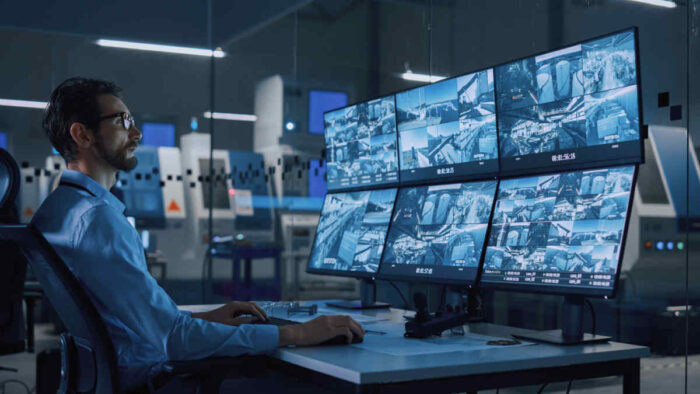
Information technology (IT) plays an indispensable role in virtually every aspect of our lives. From streamlining business operations to connecting individuals worldwide, the power of IT is undeniable.
As IT becomes more common in the workplace, it also takes on a tricky and sometimes uncomfortable role in employee surveillance. Here we dive into the evolving landscape of IT-driven employee surveillance, exploring the delicate balance between security and privacy.
Growing Trend of Employee Surveillance

As organizations continue to embrace technology, the practice of employee surveillance becomes increasingly prevalent. Monitoring employees’ activities, both online and offline, has become a standard practice for companies aiming to safeguard sensitive data and intellectual property.
This growing trend makes employees uneasy, and understandably so, given the invasion of their privacy and the complexities it brings to their work lives.
Reasons Behind Employee Surveillance
Employee surveillance is often justified as a necessary precaution to protect a company’s assets and reputation, making it more common with each passing day. With cyber threats becoming increasingly sophisticated, organizations must monitor their network activities to detect and prevent potential security breaches.
It also helps in ensuring compliance with industry regulations and company policies, which can have serious legal implications if not upheld. This need for security, while valid, frequently makes employees uneasy about the extent of surveillance in their workplace.
Role of IT in Employee Surveillance

Network Monitoring Tools
IT departments employ an array of advanced network monitoring tools to track online activities, making the role of IT in employee surveillance even more prominent. These tools allow them to closely monitor internet usage, track email communications, and identify potential security risks. Controlio software is one such tool, known for its advanced features in employee monitoring, which further highlights the IT department’s role in surveillance.
Data Loss Prevention (DLP) Systems
DLP systems are another facet of IT-driven employee surveillance, becoming more common in their usage. These systems help IT teams monitor and restrict the movement of sensitive data, effectively preventing unauthorized data leaks, while also making employees uneasy about their ability to handle data freely.
Endpoint Security
Endpoint security solutions are crucial for safeguarding individual devices within an organization. These systems can track device activities, ensuring that employees are not engaging in risky behavior that could compromise company security. This heightened level of scrutiny from IT can indeed make employees more uneasy in their workplace.
Balancing Security and Privacy

While IT’s role in employee surveillance is undeniably vital for maintaining a secure working environment, it often creates a dilemma. Employees become more common targets of scrutiny, which makes them uneasy about their privacy at work.
Balancing the need for security with employees’ privacy rights is where many organizations struggle, and the resolution of this dilemma requires a nuanced approach that respects both aspects.
Controlio Software Solution
Controlio software is an exemplary instance of an employee monitoring tool that seeks to strike this balance effectively within the scope of a 2000-word article. It provides advanced features for monitoring employee activities while respecting their privacy. Here are some ways in which Controlio addresses the concerns of both employers and employees:
- Transparent Monitoring: Controlio adopts a transparent approach to monitoring, making it clear to employees that their activities are being monitored. This transparency is pivotal in creating an atmosphere of trust within the workplace, mitigating the uneasiness that often accompanies surveillance.
- Focus on Security: Controlio prioritizes security by allowing IT teams to monitor for potential threats without invading personal privacy. It identifies and flags suspicious activities without delving into an employee’s personal life, thus alleviating some of the concerns that come with employee surveillance.
- Productivity Enhancement: Controlio’s features extend beyond surveillance; it also offers productivity-enhancing tools. This approach aims to balance the scales, showing employees that monitoring is not solely punitive but can help them in their roles, making it a more acceptable part of their work environment.
Addressing Employee Concerns

To comprehensively address employees’ unease about IT-driven surveillance, organizations must adopt a holistic approach, which this 2000-word article will explore in detail:
Establish Clear Policies
Organizations should create and communicate clear policies regarding employee surveillance. These policies should detail what is monitored, why it is monitored, and how the data is used. Transparency can go a long way in alleviating employee concerns, and a detailed explanation can help make them more comfortable with the idea of surveillance in the workplace.
Consent and Compliance
Obtaining informed consent from employees is crucial and should be extensively covered in a lengthy article. Employees should be aware of the extent and purpose of monitoring, and their consent should be freely given. This not only respects their privacy but also ensures compliance with privacy regulations, a topic that requires comprehensive exploration.
Data Protection Measures
Implementing robust data protection measures, such as encryption, secure storage, and restricted access, should be discussed in detail in this 2000-word article. These measures are critical to prevent data breaches and misuse, and a comprehensive discussion can help organizations understand their importance.
Education and Training
The importance of educating employees about the necessity of IT-driven surveillance for security purposes and training them on the tools and procedures used for surveillance deserves an extensive discussion within the context of a 2000-word article.
Training can help employees understand that surveillance is not about micromanaging but protecting the organization’s interests, thereby reducing their uneasiness.
Future of IT in Employee Surveillance

As technology continues to advance, IT’s role in employee surveillance is likely to become even more intricate, making it increasingly important to discuss it in depth. Organizations will need to strike a delicate balance between security and privacy, adopting innovative solutions like Controlio software to navigate this complex landscape.
The evolution of IT’s role in surveillance will have profound implications for both employers and employees, and these implications warrant thorough exploration.
Conclusion
IT has indeed taken on a tricky and sometimes uncomfortable role in employee surveillance, and this 2000-word article has thoroughly examined the nuances of this role.
While it becomes more common for organizations to monitor their employees’ activities, it also makes them uneasy. Striking the right balance between security and privacy is a challenging task, but it is essential for maintaining a secure and ethical work environment.
To succeed in this evolving landscape, organizations must establish clear policies, obtain consent, protect data, and educate employees in all of these aspects. By doing so, they can harness the power of IT-driven surveillance to protect their assets without compromising the trust and well-being of their workforce, ensuring a secure and harmonious workplace for the future.
















